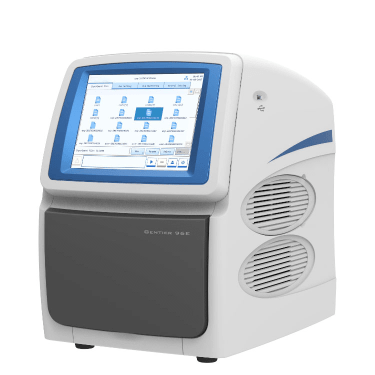Polymerase Chain Reaction (PCR) stands as a pivotal technique in molecular biology, revolutionizing genetics and biotechnology. This method facilitates the amplification of specific segments of DNA, offering a wide array of applications ranging from genetic testing to DNA sequencing. Delving into the intricacies of PCR, let's explore its fundamental working principles and various adaptations.

Fundamental Working Principles of PCR:
PCR entails a series of heating and cooling cycles to multiply a specific DNA segment, meticulously following the principles of natural DNA replication in a controlled manner.
Three Fundamental Working Steps of PCR:
Denaturation:
Heat is applied, typically around 94-98 degrees Celsius (201-208 degrees Fahrenheit), causing the DNA double helix to unwind and separate into single strands.
Annealing:
Temperature reduction to approximately 50-65 degrees Celsius (122-149 degrees Fahrenheit), allowing short DNA sequences called primers to bind to their complementary sequences on single-stranded DNA.
Extension/Elongation:
Elevation of temperature to about 72 degrees Celsius (162 degrees Fahrenheit), facilitating the synthesis of new DNA strands by a heat-resistant DNA polymerase enzyme.
Cycles and Amplification of PCR:
PCR cycles involve repeated processes of denaturation, annealing, and extension, resulting in exponential amplification of the target DNA sequence.
Each cycle doubles the amount of DNA, ultimately yielding a significant quantity of the target DNA from a minimal starting material.
Variants and Modifications of PCR:
Reverse Transcription PCR (RT-PCR):
Amplifies RNA molecules post-conversion into complementary DNA (cDNA) using reverse transcriptase enzyme, essential for examining gene expression and RNA-based activities.
Real-Time PCR:
Also known as quantitative PCR (qPCR), enables detection and quantification of DNA or RNA during amplification, facilitating precise quantification and real-time monitoring.
Nested PCR:
Utilizes two sets of primers to improve specificity and sensitivity, especially beneficial in scenarios involving low amounts of target DNA or complex DNA mixes.
Multiplex PCR:
Allows simultaneous amplification of multiple target DNA sequences using distinct primer sets, useful in genotyping, disease detection, and forensic analysis.
Hot Start PCR:
Incorporates modifications to enhance reaction specificity and prevent non-specific amplification by utilizing specific DNA polymerase or modified primers.
Digital PCR (dPCR):
Divides PCR reaction into numerous separate reactions, enabling absolute quantification of target DNA without external standards, particularly useful for detecting low-abundance targets.
Inverse PCR:
Amplifies DNA segments with known flanking sequences but an unknown sequence in between, facilitating gene cloning and discovery of unknown DNA sequences.
In Summary:
PCR, with its ability to exponentially amplify DNA, has emerged as a cornerstone in molecular biology, unlocking a plethora of applications across various disciplines. By comprehending the principles and variants of PCR, researchers have propelled advancements in genetic testing, forensics, disease diagnosis, and beyond, reshaping the landscape of science and medicine.
